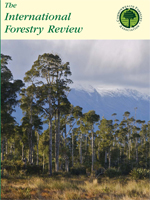Over the past 20 years, Participatory Forest Management (PFM) has become a dominant forest management strategy in Tanzania, covering more than 4.1 million hectares. Sustainable forest use and supply of wood products to local people are major aims of PFM. This paper assesses the sustainability of forest utilisation under PFM, using estimates of forest condition and extraction rates based on forest inventories and 480 household surveys from 12 forests; seven under Community Based Forest Management (CBFM), three under Joint Forest Management (JFM) and two under government management (non-PFM). Extraction of products is intense in forests close to Dar es Salaam, regardless of management regime. Further from Dar es Salaam, harvesting levels in forests under PFM are, with one prominent exception, broadly sustainable. Using GIS data from 116 wards, it is shown that half of the PFM forests in Tanzania are likely to be too small to satisfy current local wood demand.
How to translate text using browser tools
1 March 2014
Does Participatory Forest Management Promote Sustainable Forest Utilisation in Tanzania?
T. Treue,
Y.M. Ngaga,
H. Meilby,
J.F. Lund,
G. Kajembe,
S. Iddi,
T. Blomley,
I. Theilade,
S.A.O. Chamshama,
K. Skeie,
M.A. Njana,
S.E. Ngowi,
J.A.K. Isango,
N.D. Burgess
ACCESS THE FULL ARTICLE

International Forestry Review
Vol. 16 • No. 1
March 2014
Vol. 16 • No. 1
March 2014
community based forest management
Joint Forest Management
sustainable harvest
tropical forest
wood extraction




